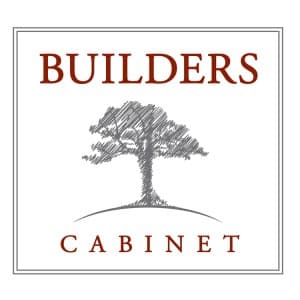What is the Standard Height of Kitchen Cabinets?
It’s probably fair to say that up until you decided to revamp your kitchen, you’ve probably spent very little time pondering over the physical dimensions of kitchen cabinetry. For that reason, we’ve decided to take some of the guesswork out of selecting your custom-made kitchen cabinets by providing you with some of the widely accepted standard measurements of different cabinet types.

Color photo of a beautiful modern kitchen.
Standard Height, Depth & Width of Base Cabinets
Base cabinets do most of the heavy lifting in any kitchen, and while you might be able to get away with not having any wall-mounted cabinets in your kitchen, the same can’t be said about base cabinets. Without base cabinets, there would be no place for your range, your dishwasher or your sink.
| Height (without a countertop) | 34.5 inches |
| Height (with a countertop) | 35 to 36 inches |
| Depth (without a countertop) | 24 inches |
| Depth (with a countertop) | 25 to 26 inches |
| Width | 12 to 48 inches |
The difference in height is small, because design guidelines dictate that 34.5 inches is a good height to ensure the countertop is accessible by the greatest number of people. The greatest flexibility comes with the width of the cabinets, which can really be as wide or as narrow as you need.

two joiners installing a kitchen
Standard Height, Depth & Width of Wall Cabinets
As the name implies, wall cabinets are attached directly to the wall studs and are used to store things like canned goods, baking supplies, and other kitchen staples. Since these cabinets tend to be installed at eye level (and are thus a focal point in your kitchen), many homeowners tend to stretch their budgets with these cabinets compared to the utilitarian base cabinets.
| Height | 12 to 60 inches |
| Depth | 11-3/4 to 24 inches |
| Width | 9 to 36 inches |
Of course, the height of wall cabinets is going to be determined by the height of the ceiling. Given that there is generally very little wiggle room in base cabinets due to the previously mentioned accessibility issue, you might think that you’ll be forced to compromise your vision. Having said that, your choice of cabinets will likely fall in the standard 36 to 48-inch range, unless you have no problem getting out your step ladder whenever you need to reach the colander. Depth for these cabinets can vary a little since it’s acceptable for wall cabinets to be less deep than base cabinets but not vice versa.
In terms of width, it’s rare that single or double door wall cabinets exceed the 36-inch mark for the simple reason that a three-foot wide door is not aesthetically pleasing.
When installing wall cabinets, you generally want to leave about 18 inches of space between the countertop and the bottom edge of the wall mounted cabinets. This amount of space is considered to be the optimal amount of working space. Of course, as with any other custom project, some of these standard measurements can be tweaked in order to make the space as comfortable and as functional as possible for you and your family.

a modern kitchen partially finished
Standard Height, Depth & Width of Tall Cabinets
If you couldn’t tell by the title, tall cabinets are generally considered floor-to-ceiling cabinets (even if they end up a few inches shy of the actual ceiling) and are a treasure trove of storage. Overall, the physical dimensions and mounting directions of tall cabinets mirror those of the wall cabinets, except for the expansive height. If you have standard eight-foot ceilings, you might consider an 84-inch cabinet height, but the choice is purely aesthetic. Since these types of cabinets are often used as pantries, depth and width measurements of 12 inches are relatively common due to the simple fact that deeper and wider cabinets can often lead you to “lose” food and overbuy just to fill up the space. A functional pantry is primarily one that allows you to get what you need without hunting for it rather than just provide a sheer volume of space.
| Height | 84 to 108 inches |
| Depth | 11-3/4 to 24 inches |
| Width | 9 to 36 inches |
Standard Height, Depth & Width of Kitchen Islands
While the kitchen island might seem completely different from kitchen cabinets, their dimensions are similarly governed by some pretty good rules of thumb. In terms of height, you’ll want to make sure that the majority of the island is equal to the height of your kitchen’s base cabinets. Having your working surfaces at an equal height is much more functional and a lot less likely to cause accidents (the exception, of course, is if you plan on a portion of your island to serve as a dining area, at which point it’s acceptable to include an elevated surface 12 to 18 inches deep). When considering the width of a kitchen island, you’ll want to make sure that it’s at least two-feet deep and four-feet wide in order for you to get any real use out of it. If your kitchen can’t accommodate an island with these minimum dimensions and give you enough clearance to move freely about, take a moment to reconsider if a kitchen island is the way to go. There are certainly other options that could work in smaller spaces.
Standard Height, Depth & of Upper Kitchen Cabinets
All things considered, knowing that kitchen cabinets tend to follow some pretty common dimensional norms should hopefully make it easier to figure out what’s going to look best (and more importantly, work best) in your kitchen. If you need further assistance figuring out which kitchen cabinets should be a part of your next renovation project, consult the experts at Build my Kitchen.


Leave a Reply